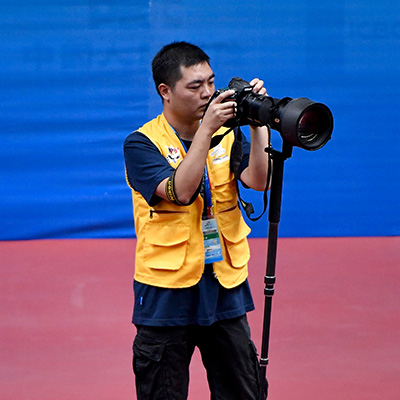

Battling poverty on the “roof of the world”


Listen to this story read by AI voice.

China’s Tibet Autonomous Region is located in the Qinghai-Tibet Plateau, known as the “roof of the world.” In recent years, the region gives high priority to poverty alleviation and takes effective measures to improve the living and working conditions of locals. By now, the poverty relief policies have benefited 628,000 registered poor residents in the region. Browse this collection of images and find out how the locals’ life has improved.

LEFT: Villager Cewang Gongbo (L) poses with his wife Qoizong in Gan'en Village of Tingri County, Xigaze.
RIGHT: Cewang Gongbo presents a Khata scarf to a tourist at the Kangzhuang relocation community in Tingri County.
After moving to a 70-square-meter residence at Kangzhuang community in 2016, Cewang Gongbo found his new job at a local construction site. His wife Qoizon also got re-employed as a sanitation worker, earning 1,000 yuan (144 U.S. dollars) per month.

LEFT: Villager Cangqung poses with her son Qoipei Cering in Mingma Village of Lhaze County, Xigaze.
RIGHT: Troupe members performs for villagers at a relocation site in Mingma Village.
All residents in Mingma Village have relocated to a new village site in 2016 in pursuit of better development. After relocation, Cangqung and her family now have access to leisure square, activity center, school and other amenities. Her life significantly improved with the opening of her own store, which brings her an annual income of 10,000 yuan (1,445 U.S. dollars). She is also entitled to dividends from a village cooperative.

LEFT: A portrait of villager Tubdain Qupei in Markam County, Qamdo.
RIGHT: Tubdain Qupei works at an agricultural collective in Markam County.
Tubdain Qupei has been working at the agricultural collective to plant trees and feed cattle for years. This job pays him 3,000 yuan (433 U.S. dollars) every month.

LEFT: A portrait of villager Lhamo in Kejia Village of Burang County, Ngari Prefecture.
RIGHT: Lhamo drying bedding in her courtyard.
In addition to poverty-relief subsidies, Lhamo has been working in a village collective which pays her about 5,000 yuan (722 U.S. dollars) every year.

LEFT: A portrait of villager Zhoigar in Lhaze County, Xigaze.
RIGHT: Zhoigar working at a local chicken breeding center in Lhaze County.
Zhoigar started working at the chicken breeding center at the beginning of 2020 with a monthly salary of 4,000 yuan (578 U.S. dollars).

LEFT: A portrait of villager Badain Como in Bangbug Village of Tingri County, Xigaze.
RIGHT: Badain Como collecting her husband Wangdi's salary at the animal husbandry collective of Bangbug Village.
Wangdi earns 3,000 yuan (433 U.S. dollars) a month herding for the collective, which also offers him dividends at the end of the year.

LEFT: A portrait of villager Tonzhub in Bangbug Village of Tingri County, Xigaze.
RIGHT: Tonzhub feeds sheep at an animal husbandry of Bangbug Village.
Tonzhub earns 3,500 yuan (506 U.S. dollars) a month taking care of sheep for the animal husbandry, which also offers him dividends at the end of the year.

LEFT: Villager Dorje (L) poses with his son Tonzhub in Chagjug Village of Sagya County, Xigaze.
RIGHT: An aerial view of Chagjug Village.
Vocational training programs carried out in Chagjug Village in recent years have helped many villagers find new careers. Tonzhub was among the trainees and currently runs his own construction company here.

LEFT: Villager Tsering Dorje (R) posing with his wife Nanta in Dara Village of Zhongba County, Xigaze
RIGHT: An aerial view of Dara Village.
In 2017, Tsering Dorje and his family moved into a new residence with better village infrastructure and transportation. He now works at a village cooperative which provides him steady monthly income plus annual dividends.

LEFT: Villager Toinzhub Dorje poses with his grandson Qumda at the Kangle Xinju poverty-relief relocation site in Gar County.
RIGHT: An aerial view of Kangle Xinju, which is home to over 2,000 plateau residents who have relocated from less hospitable areas.
Toinzhub Dorje had moved to Kangle Xinju from Gerze County of Ngari Prefecture in 2017. The family now live in a 100-square-meter residence with full access to clinic, kindergarten, activity center and other amenities.

LEFT: Billager Danmuzhen (C, rear) poses with his wife Tashi Lhamo (L, rear) and two daughters in front of their new residence at the Kangle Xinju poverty-relief relocation site in Gar County.
RIGHT: An aerial view of Kangle Xinju, which is home to over 2,000 plateau residents who have relocated from less hospitable areas.
Danmuzhen had moved to Kangle Xinju from Rutog County of Ngari Prefecture in 2018. The family now live in a 150-square-meter residence with full access to clinic, kindergarten, activity center and other amenities.

LEFT: Villager Sujia poses at an eco-friendly agricultural industrial park in Gar County, Ngari Prefecture.
RIGHT: Sujia checks vegetable growth at the eco-friendly agricultural industrial park.
Sujia started learning vegetable farming techniques at the agricultural industrial park in 2017. He has become an experienced vegetable farmer with a monthly salary of 6,000 yuan (866 U.S. dollars).

LEFT: A portrait of villager Gesang Qoipei at the historical site of the ancient Guge Kingdom near Zhaburang Village of Zanda County, Ngari Prefecture.
RIGHT: An aerial view of the ancient Guge Kingdom historical site in Zanda County.
Gesang Qoipei works on a conservation team for cultural relics related to the ancient Guge Kingdom. He has also invested in a family hotel catering to tourists while working as a part time guide.

LEFT: A portrait of villager Jingzhoi Degyi at the family hotel she runs in Zhaburang Village of Zanda County, Ngari Prefecture.
RIGHT: Jingzhoi Degyi cleans a room in her family hotel.
Like Jingzhoi Degyi, many residents of Zhaburang Village have invested in tourism thanks to the village's proximity to the historical site of the ancient Guge Kingdom.

LEFT: A portrait of villager Gangma Daje in Gangsha Village of Burang County, Ngari Prefecture.
RIGHT: A view of Mount Kangrinboqe in Burang County.
Gangma Daje now earns a livelihood by offering tourist services at the foot of Mount Kangrinboqe.

LEFT: Yangzhuo poses for photos at a garment and carpet factory at Kangle Xinju poverty-relief relocation site in Gar County.
RIGHT: Yangzhuo works at a factory.
Kangle Xinju poverty-relief relocation site is home to over 2,000 plateau residents who have relocated from less hospitable areas.
Yangzhuo moved to Kangle Xinju from Gerze County of Ngari Prefecture in 2017 and her family now live in a 125-square-meter residence. Yangzhuo and her daughter have been re-employed at a garment and carpet factory here.

LEFT: A portrait of villager Tsering Qoipei in Gangsha Village of Burang County, Ngari Prefecture.
RIGHT: Tsering Qoipei makes bed at the family hotel he runs in Gangsha Village, which lies at the foot of Mount Kangrinboqe.
Many residents of Gangsha Village now earn a good livelihood by offering tourist services at the foot of Mount Kangrinboqe.

Zhan Yan
Born on Nov. 14, 1982 in Shangrao, Jiangxi Province, Zhan Yan began working as photojournalist at Xinhua News Agency Shanxi Branch on Jan. 1, 2010. His coverage focus is on the life of ordinary people.
Producers: Wang Jianhua, Xue Dongmei
Editors: Lin Fanjng, Li Mangmang, Zhao Yusi, Wang Siwei, Jin Haoyuan
Web Designers: Peng Yuhe, Wang Yiliang
